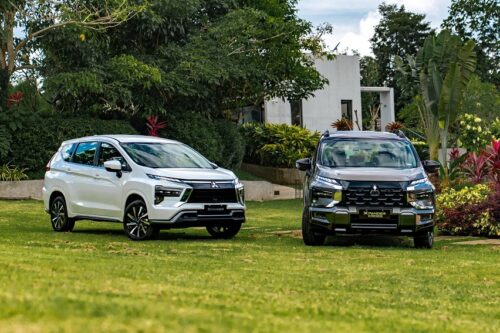Here's a look at Mercedes-Benz’s past wheel designs, future concepts
Wheels of the future can do more than just elevate a car's look

Mercedes-Benz underscored the functional and aesthetic importance of wheels in vehicles, looking back at the company’s past designs and a peek at future concepts.
KEY TAKEAWAYS
What type of wheel did the first Mercedes-Benz use?
The first Mercedes-Benz used a wheel with firmly bolted wooden spokes and a steel rim.Which Mercedes-Benz concept car has wheels that can change directions individually?
The Mercedes-Benz concept car with wheels that can change direction individually is the VISION AVTR.In a recent press release, the German car brand pointed out that wheels, like “a beautiful pair of handmade shoes or some sharp sneakers” can “refine and define the character of every Mercedes‑Benz.”
The Stuttgart-headquartered brand began by recounting the first wheel used on a Mercedes-Benz, which combined firmly bolted wooden spokes with a steel rim, and used on the Mercedes 35 hp.
 Photo from Mercedes-Benz
Photo from Mercedes-BenzAs customers discovered that cars can do more than just transport people from point A to point B, lighter wire-spoke wheels (used for sports cars) quickly became popular. They were, Mercedes-Benz noted — 50 percent lighter than their robust wooden counterparts and have played significant roles in racing and record-breaking events.
Often fitted with sheet steel or aluminum covers, the so-called “disc wheels” caused less air turbulence and therefore brought considerable aerodynamic advantages.
Such wheels were used on the 200-horsepower (hp) “Blitzen‑Benz,” which achieved a top speed of 228 kilometers per hour and made it the fastest machine back in 1911.
 Photo from Mercedes-Benz
Photo from Mercedes-BenzThen came the postwar years (1950) and the swinging sixties (1960). The era of boom and rock and roll saw the introduction of colored hubcaps and perforated trim rings.
The pioneering Mercedes-Benz 170 saloon from 1931 used wheels that had small hubcaps with fine decorative lines. In the center was the Mercedes star.
Per the carmaker, these types of wheels were available in various colors from deep black to hues that match the bodywork. Chrome-plated trim rings also made it possible to fulfill individual customer wishes.
Notable models that wore these types of wheels include the “Ponton‑Mercedes” Type 220 (W 180), and the ambassadorial Mercedes‑Benz Type 300 b (W 186 III) saloon — the so-called “Adenauer‑Mercedes”. Also joining the trend was the imperious Mercedes‑Benz 600 Pullman (W 100).
Composite wheels were also introduced in this era with the Mercedes-Benz 300 SL “Gullwing” Coupé using a wheel disc made of steel and a rim made out of aluminum. It also adapted the center lock with a large wing nut used in motor racing.
The decade that followed (1970), Mercedes-Benz produced “baroque wheels,” which were used in various models such as the 280 S to 300 SEL S‑Class models, the “Stroke Eight” saloons, the SL and SLC models and the S‑Class 116 model series.
In the 1980s, Mercedes-Benz switched to focusing on full-surface alloy wheels.
The company developed minimalist 15‑hole and eight‑hole alloy wheels and was used across the board. It was worn by models such as the Mercedes-Benz 190 E 2.3‑16, affectionately nicknamed the “Baby Benz.”
Another notable model that used a similar set of wheels is the Mercedes-Benz 500 SEL saloon (126 model series).
 Photo from Mercedes-Benz
Photo from Mercedes-BenzThen, the 1990s arrived. During this decade onwards, Mercedes-Benz played with various wheel designs with the most prominent being the EVO II wheel on the 190 E 2.5‑16 high‑performance saloon.
Per the automotive marque, the said wheel design still enjoys cult status today because it came directly from motorsport and replaced the previous small multi-hole alloys.
Its design, Mercedes-Benz explained, is based on a star with six powerful arms. The cooling air openings allow a view of the brake system.
Looking into the future, Mercedes-Benz equipped its electric vehicles with wheels that lean more towards aerodynamic optimization for efficiency and range. Of course, it still aims to make the car look great.
 Photo from Mercedes-Benz
Photo from Mercedes-BenzSome variants also have weight-optimized plastic inserts.
A further look into what could become the wheels of the future can be seen in Mercedes-Benz’s operational concept vehicle VISION EQXX.
It rides on lightweight magnesium forged wheels in a semi-transparent double-spoke design with rose-gold accents. These wheels are shod in tires with low rolling resistance and improved aerodynamic geometry to help improve the vehicle’s range.
The Mercedes-Benz EQXX’s record of more than 1,200 kilometers on one battery charge is also thanks to this.
On the other hand, the Mercedes-Benz Vision One‑Eleven dons wheels that form a vivid contrast to the reduced and smooth body shape of the vehicle, which is reminiscent of a sculptural work of art.
Further, the Mercedes-Benz VISION AVTR has been fitted with “bubble wheels” that enable new driving movements and a small turning circle.
Per the carmaker, the abovementioned features are made possible because the wheels minimize the contact surface of the tires with the ground. All four wheels can change direction individually. In other words, they can move forwards, backwards and even diagonally.
Also read:
Mercedes-Benz gifts ‘Faker’ personalized AMG SL 63 4MATIC+
Mercedes-Benz PH hopeful with gradually increasing demand for EVs
Sell your car at the best price
 Verified and genuine buyers
Verified and genuine buyers
Mercedes-Benz Car Models
Trending & Fresh Updates
- Latest
- Popular
You might also be interested in
- News
- Featured Stories
Mercedes-Benz Featured Cars
- Latest
- Upcoming
- Popular
Latest Mercedes-Benz Car Videos on Zigwheels

Mercedes-Benz Car Articles From Carmudi
- journal






























































